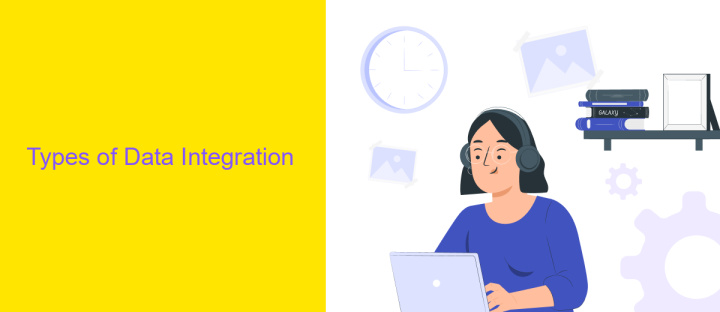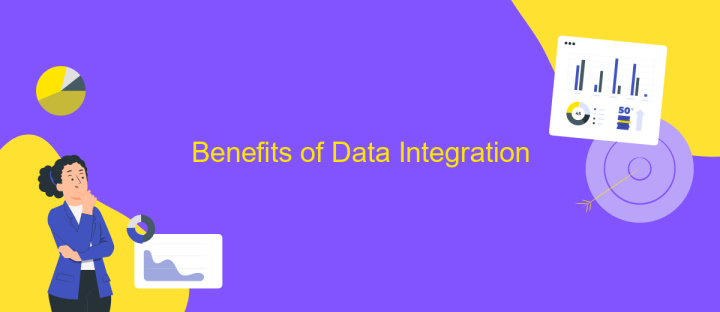What is Integration of Data
Data integration is a crucial process in today's data-driven world, enabling organizations to combine information from various sources into a unified view. This practice enhances decision-making, improves efficiency, and fosters innovation by providing a comprehensive understanding of diverse datasets. In this article, we will explore the fundamentals of data integration, its benefits, and the key methodologies employed to achieve seamless data unification.
Introduction
Data integration is a critical process in the modern data-driven world, enabling businesses and organizations to unify disparate data sources into a cohesive and accessible format. This process not only enhances data consistency but also provides a comprehensive view of information, facilitating better decision-making and operational efficiency. As data continues to grow in volume and complexity, the importance of effective data integration cannot be overstated.
- Combining data from various sources
- Ensuring data quality and consistency
- Providing a unified view for analytics
- Improving data accessibility and usability
- Supporting real-time data processing
Organizations leverage data integration to break down data silos, streamline workflows, and gain valuable insights from their data assets. By integrating data effectively, companies can enhance their analytical capabilities, drive innovation, and maintain a competitive edge in their respective industries. As technology evolves, the methods and tools for data integration continue to advance, offering more robust and scalable solutions to meet the growing demands of data management.
Types of Data Integration

Data integration encompasses various types, each tailored to specific needs and scenarios. One common type is ETL (Extract, Transform, Load), where data is extracted from multiple sources, transformed into a suitable format, and then loaded into a target system. This method is widely used for data warehousing and business intelligence. Another type is real-time data integration, which involves continuous data synchronization between systems, ensuring that the most current data is available across platforms. This is crucial for applications requiring up-to-the-minute information, such as financial trading systems or live customer support dashboards.
API-based data integration is another prevalent method, leveraging APIs to connect and integrate different software applications. Services like ApiX-Drive facilitate this process by providing a user-friendly platform to set up and manage integrations without extensive coding knowledge. This type of integration is particularly useful for businesses looking to streamline workflows and automate data exchange between various SaaS applications. Lastly, data virtualization allows users to access and manipulate data without needing to know its physical location or format, providing a unified view of data from diverse sources.
Benefits of Data Integration

Integrating data from various sources can significantly enhance the efficiency and effectiveness of business operations. By consolidating data into a single, unified view, organizations can gain deeper insights and make more informed decisions. This process not only streamlines workflows but also reduces the time and effort required to manage and analyze data.
- Improved Data Quality: Integration helps eliminate data silos, ensuring that information is accurate, consistent, and up-to-date across the organization.
- Enhanced Decision-Making: With a comprehensive view of data, businesses can identify trends and patterns more easily, leading to better strategic planning and decision-making.
- Increased Efficiency: Automated data integration processes reduce manual data entry and errors, freeing up valuable time for employees to focus on more critical tasks.
- Cost Savings: By optimizing data management processes, organizations can reduce operational costs associated with data storage, retrieval, and analysis.
- Scalability: Integrated data systems can easily adapt to growing volumes of data, ensuring that the organization can scale its operations without compromising on data quality or performance.
Overall, data integration is a crucial component for any organization looking to leverage its data assets effectively. It not only improves operational efficiency but also provides a competitive edge by enabling more accurate and timely decision-making. By investing in data integration technologies, businesses can unlock the full potential of their data and drive growth and innovation.
Challenges of Data Integration

Integrating data from multiple sources poses several challenges that can hinder the effectiveness of data-driven decisions. One significant issue is data inconsistency, where varying formats and structures make it difficult to combine datasets seamlessly. Additionally, the sheer volume of data can overwhelm systems, leading to inefficiencies and delays.
Another challenge is ensuring data quality. Inaccurate, incomplete, or outdated information can compromise the integrity of the integrated dataset. This is further complicated by the need for real-time data integration, which requires robust infrastructure and sophisticated algorithms to maintain accuracy and timeliness.
- Data inconsistency across different sources
- Managing large volumes of data
- Ensuring data quality and accuracy
- Real-time data integration requirements
- Data security and privacy concerns
Addressing these challenges requires a strategic approach that includes advanced data integration tools, standardized data formats, and rigorous data governance policies. By overcoming these obstacles, organizations can unlock the full potential of their data assets, enabling more informed decision-making and improved operational efficiency.


Conclusion
In conclusion, data integration is a critical process for organizations aiming to unify disparate data sources into a cohesive and accessible system. This integration enables businesses to make informed decisions, streamline operations, and enhance overall efficiency. As data continues to proliferate, the need for effective integration strategies becomes increasingly paramount.
Utilizing services like ApiX-Drive can significantly simplify the integration process. ApiX-Drive offers a user-friendly platform that connects various applications and automates data workflows without requiring extensive technical expertise. By leveraging such tools, organizations can ensure seamless data synchronization, reduce manual effort, and focus more on strategic initiatives. Ultimately, successful data integration empowers businesses to harness the full potential of their data, driving innovation and growth.
FAQ
What is Data Integration?
Why is Data Integration important?
What are the common methods of Data Integration?
What challenges can arise during Data Integration?
How can automation tools help with Data Integration?
Strive to take your business to the next level, achieve your goals faster and more efficiently? Apix-Drive is your reliable assistant for these tasks. An online service and application connector will help you automate key business processes and get rid of the routine. You and your employees will free up time for important core tasks. Try Apix-Drive features for free to see the effectiveness of the online connector for yourself.

